The Skyscraper Museum is devoted to the study of high-rise building, past, present, and future. The Museum explores tall buildings as objects of design, products of technology, sites of construction, investments in real estate, and places of work and residence. This site will look better in a browser that supports web standards, but it is accessible to any browser or Internet device.
THE EAST RIVER WATERFRONT
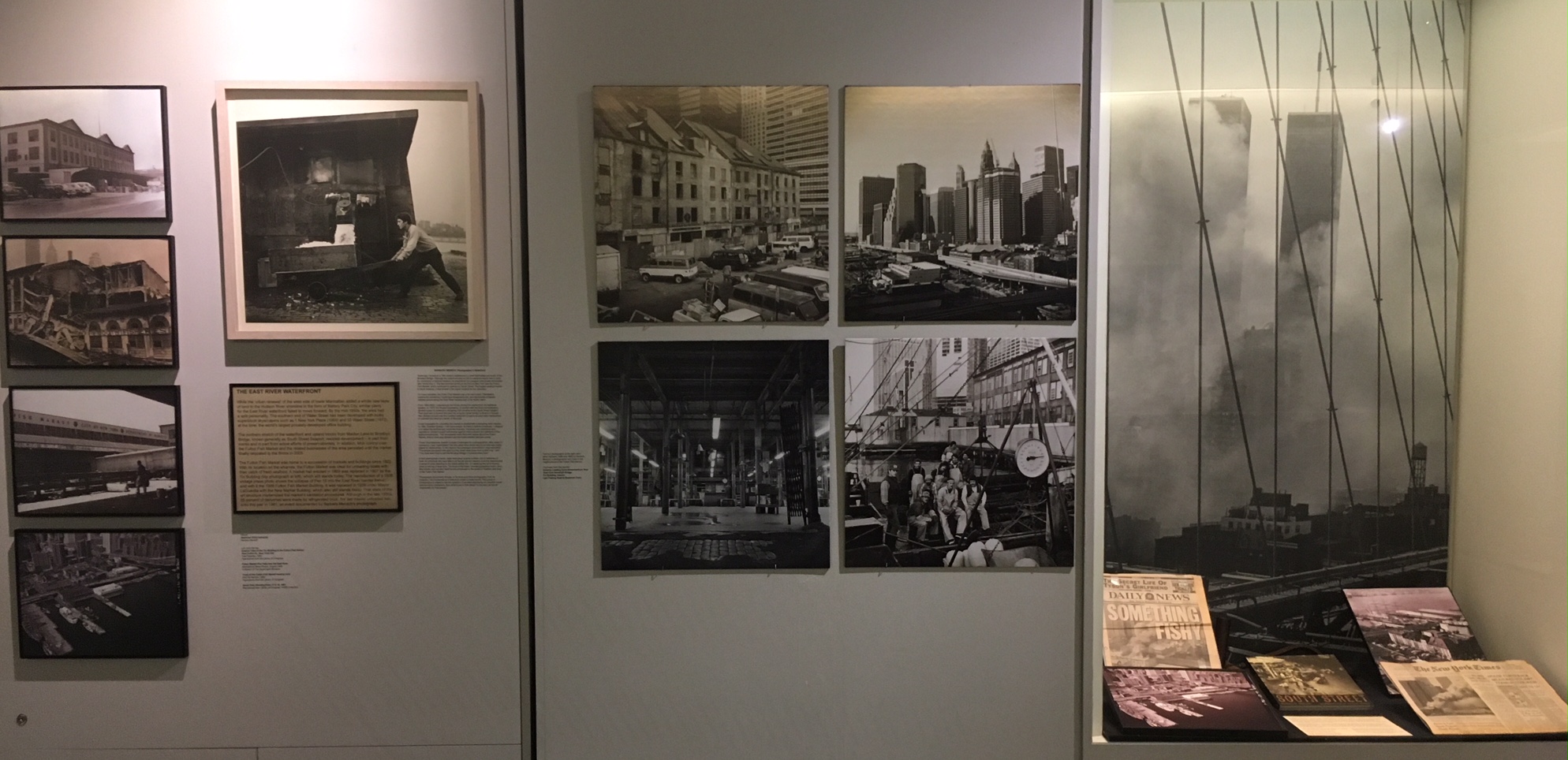 Installation view
Installation view
While the ‘urban renewal’ of the west side of lower Manhattan added a whole new layer of land to the Hudson River shoreline in the form of Battery Park City, similar plans for the East River waterfront failed to move forward. By the mid-1990s, the area had a split personality. The southern end of Water Street had been developed with bulky superblock skyscrapers such as 1 New York Plaza (1969) and 55 Water Street (1972), at the time, the world’s largest privately-developed office building.
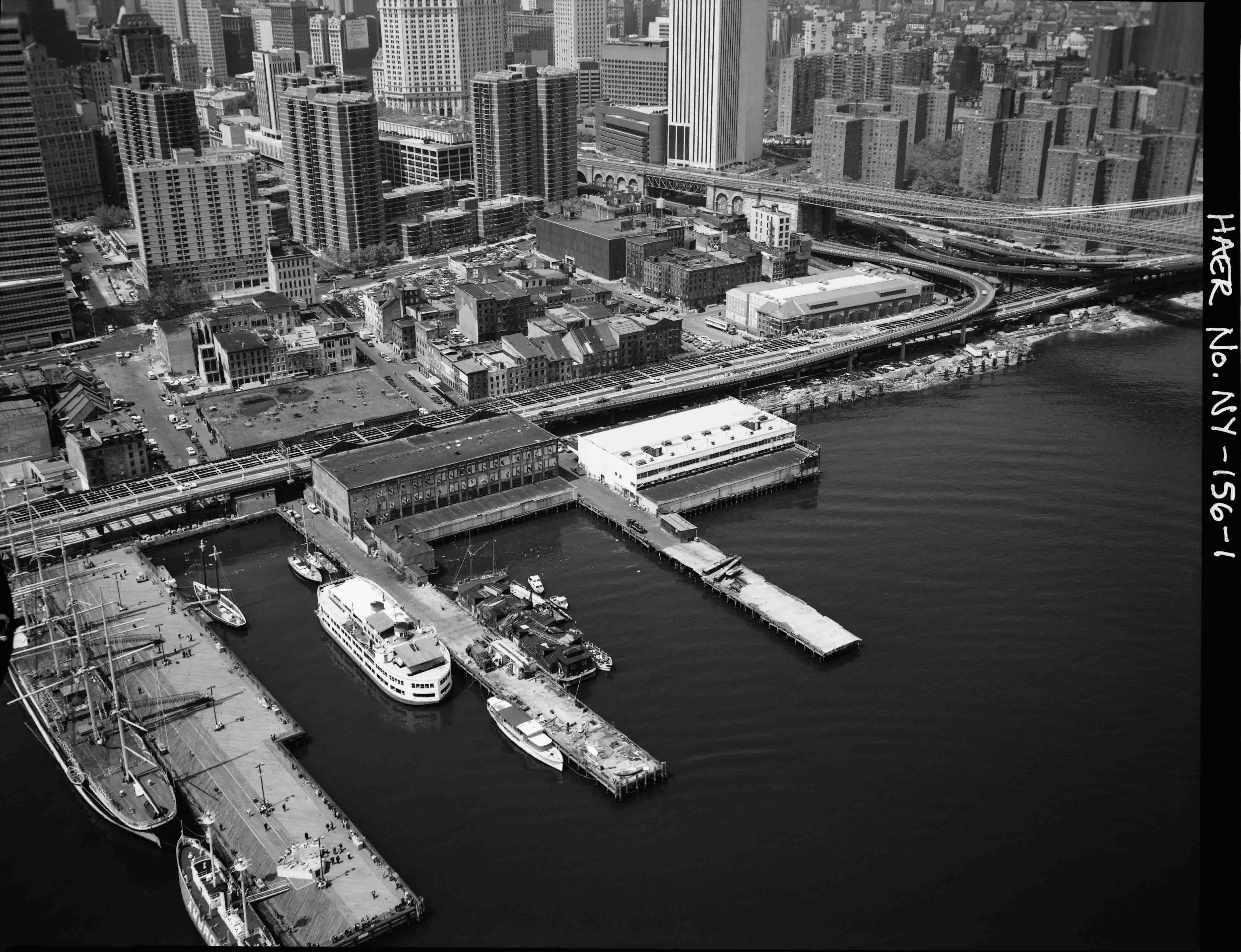 Installation view
Installation view
The northern stretch of the waterfront and upland blocks from Maiden Lane to Brooklyn Bridge, known generally as South Street Seaport, resisted development – in part from inertia and in part from active efforts of preservationists. In addition, Mob control over the Fulton Fish Market and the related businesses of the area persisted until the market finally relocated to the Bronx in 2005.
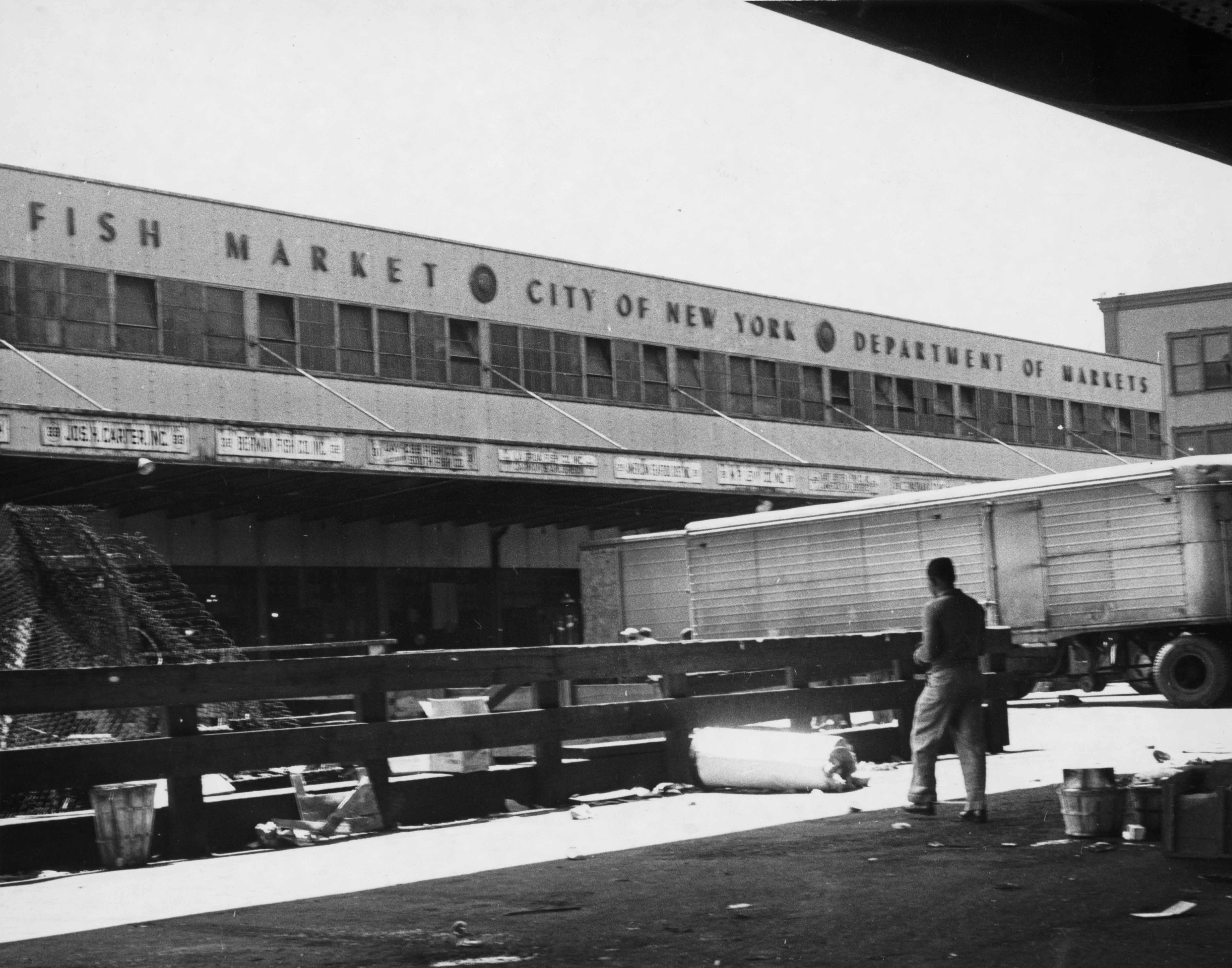
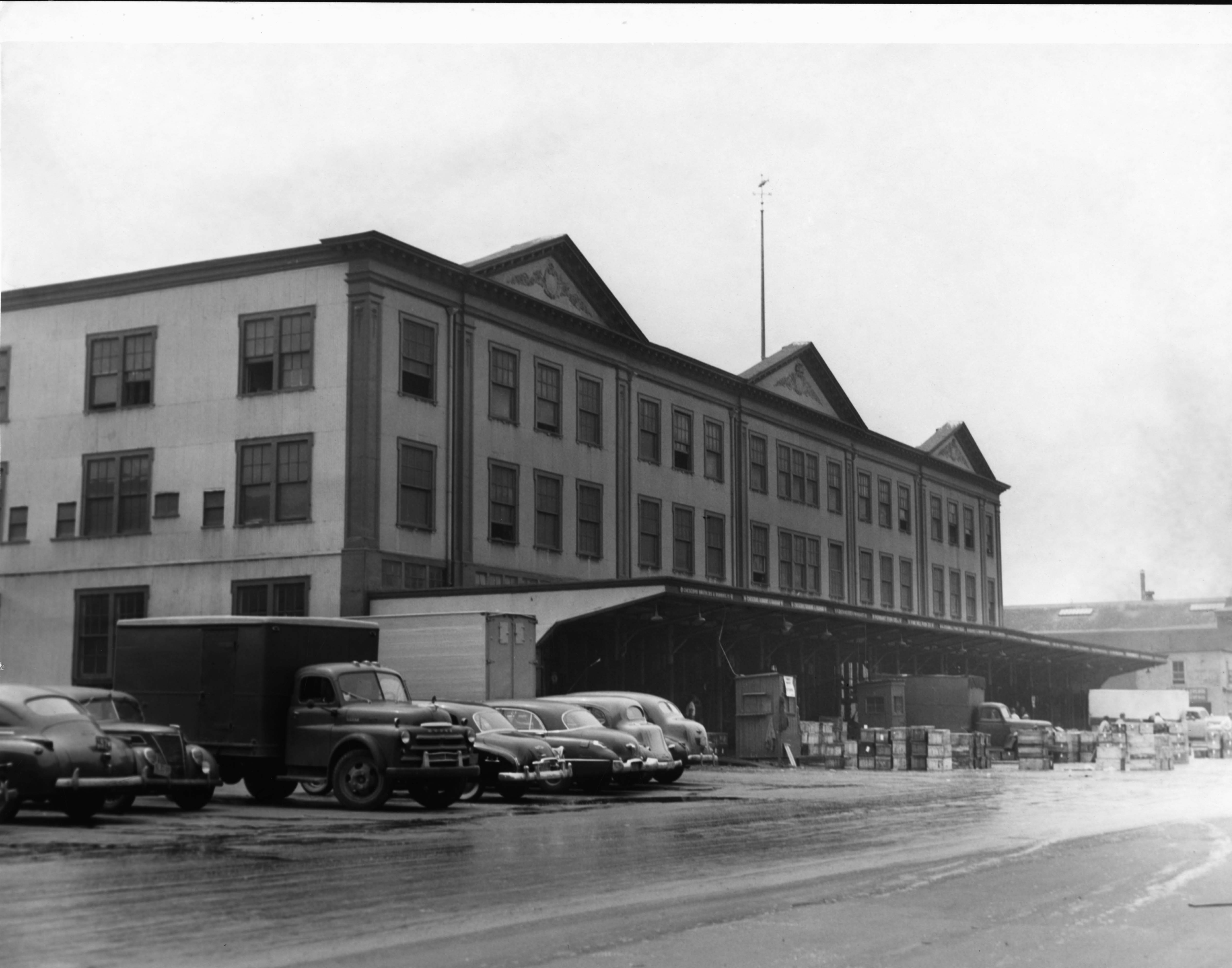 Left: Truck at the Fulton Fish Market loading dock
Dick De Marsico, 1963, Library of Congress. Right: Exterior View of the Tin Building at the Fulton Fish Market
from Fulton St., New York City
Fred Palumbo, 1951, Library of Congress.
Left: Truck at the Fulton Fish Market loading dock
Dick De Marsico, 1963, Library of Congress. Right: Exterior View of the Tin Building at the Fulton Fish Market
from Fulton St., New York City
Fred Palumbo, 1951, Library of Congress.
The Fulton Fish Market was home to a succession of markets and buildings since 1822. With its location on the wharves, the Fulton Market was ideal for unloading boats with their catch of fresh seafood. A market hall erected in 1869 was replaced in 1907 by the Tin Building (above), which still stands today. The reproduction of a 1936 vintage press photo shows the collapse of Pier 18 into the East River (below) and with it the 1909 Fulton Fish Market Building. It was replaced in 1939 under Mayor LaGuardia with the New Market Building, which also still stands today. That state-of-the-art structure modernized the market’s sanitation procedures. Although in the late 1950s, 85 percent of deliveries were made by refrigerated truck, the last trawler unloaded fish onto this pier in 1981, an event documented by Barbara Mensch’s photograph.
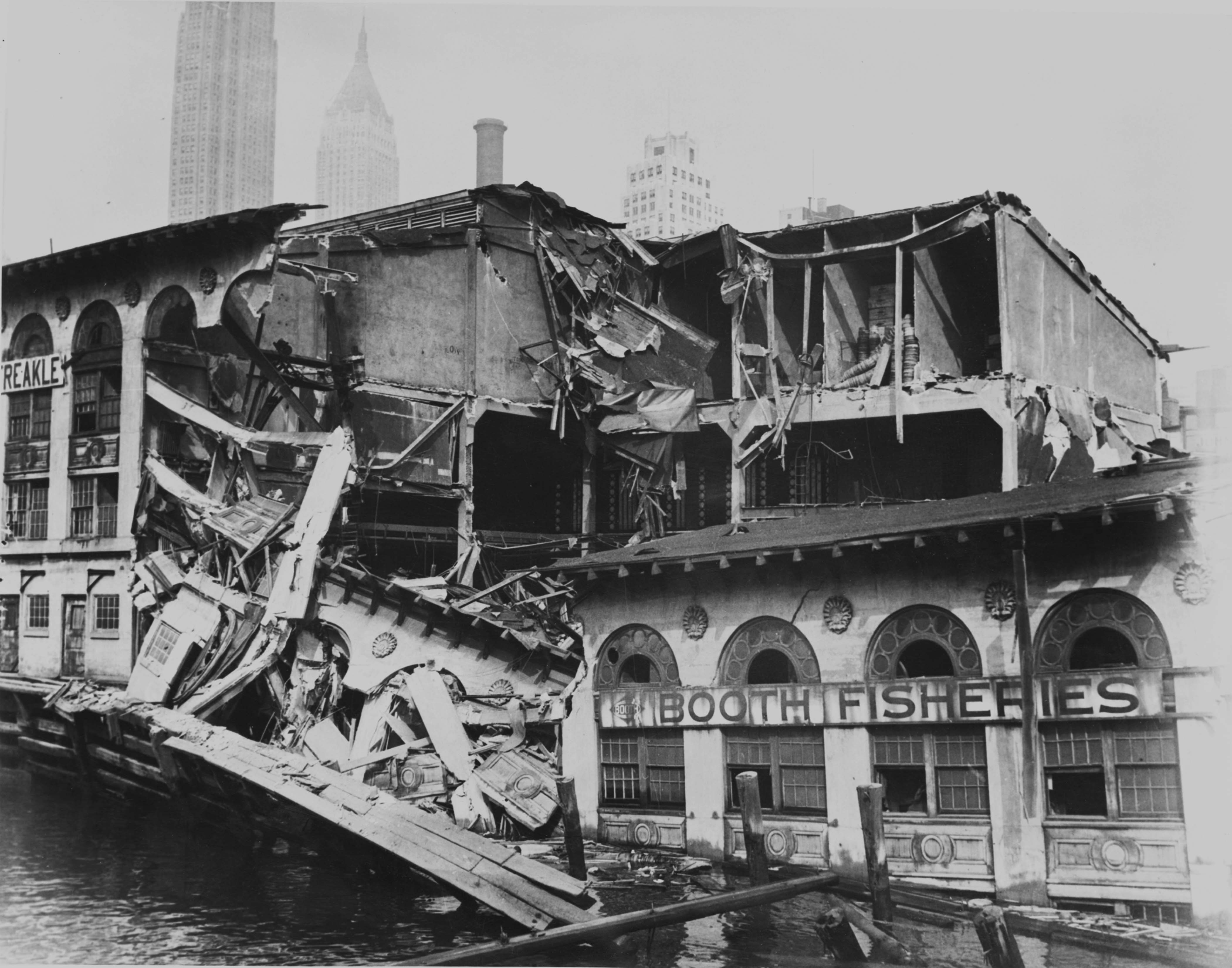 Fulton Market Pier Falls into the East River,
International News Photos, August 1936.
Collection of The Skyscraper Museum.
Fulton Market Pier Falls into the East River,
International News Photos, August 1936.
Collection of The Skyscraper Museum.
Barbara Mensch Photographs
The photographs below were taken by Barbara Mensch, a photographer who since 1978 has lived in the Fulton Fish Market neighborhood. Over the decades, Mensch worked hard to bond with the men who labored in the Seaport, learning their life stories and documenting their culture. Two years after the 2005 relocation of the Fulton Fish Market to the Bronx, Mensch released her tribute to that lost world, entitled South Street (Columbia University Press, 2007).
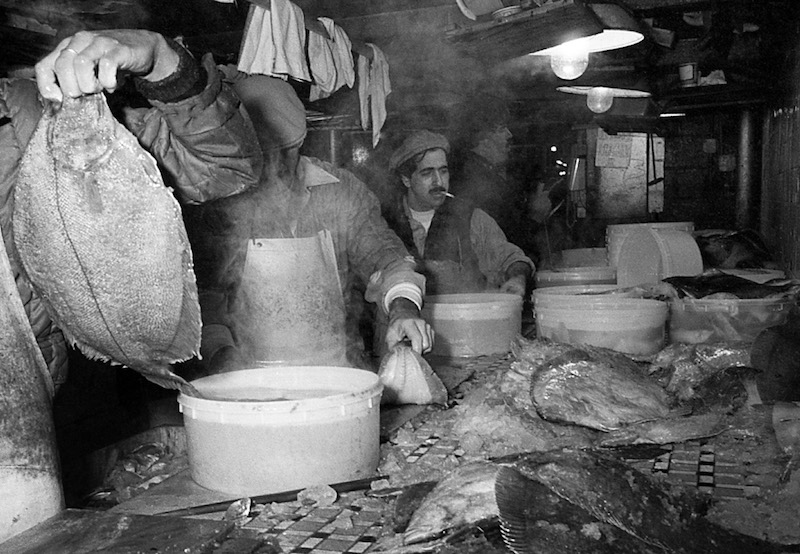 Smitty's Fillet House, Courtesy Barbara Mensch.
Smitty's Fillet House, Courtesy Barbara Mensch.
BARBARA MENSCH, Photographer’s Statement
Years ago I moved to a 19th-century warehouse in Lower Manhattan just south of the Brooklyn Bridge. Although the waterfront was so rich in maritime history that it could be considered a national treasure, its importance as a seaport was greatly diminished after World War II. The last commercial link to the Port of New York was the Fulton Fish Market, which continued to operate on South Street. The largest seafood market in North America, it had thrived in the same location for two centuries.
For many decades, the Fulton Fish Market was a no man’s land. Clandestine underworld operations, mysterious disappearances, and discoveries of bodies washed ashore along the East River became part of its mythic fabric.
From 1980-2005, I experienced the forces driving the market from its traditional location. In 1979, the Rouse Corporation, in tandem with the Koch administration, devised a plan to construct a shopping mall complex at the South Street Seaport Their goal was to convert the area into a tourist center similar to Boston’s Fanueil Hall. Battles ensued over the coveted waterfront property as each side maneuvered to outsmart the other in a series of face-offs.
It was impossible for a bustling fish market to coexist with a sprawling mall complex. In 1985, Rudolph Giuliani – the future mayor, but then a federal prosecutor – stepped in to assist the political and corporate interests, imposing new restrictions and regulations. Giuliani sought indictments against many owners and operators of the seafood businesses. The newspapers were filled with stories about the Fulton Market, where crime was rampant and the mafia wielded absolute power.
These circumstances created constant challenges for a photographer. After years of resistance, I was “assimilated” into this urban tribe whose key to survival was solely based on relationships. In this Damon Runyonesque environment I was instructed: “The streets are paved with gold, but the smart ones know how to pick it up,” and “You must learn how to sell the Brooklyn Bridge a hundred times over.”
In this workingman’s world, tasks took place outside in bitter cold or extremes of heat. An individual who was able to do his job earned respect; a worker experienced a sense of pride standing on the street selling fish, or mastering the art of boning shad or carving a large tuna. The tools of the trade, including grappling hooks, axes, fillet knives, and wooden hand trucks contributed to the power of tradition and ritual of the Fulton Fish Market.
Photography documents change. In its most pure form photography, from its inception, has functioned as a means to create a visual record. This group of photographs is meant to ask the question: if we keep destroying our valuable social and economic institutions, then what is put in their place? In the end, we are all responsible for that answer.
These four photgraph below were taken between 1980 and 1985 by Barbara Mensch. Click to enlarge
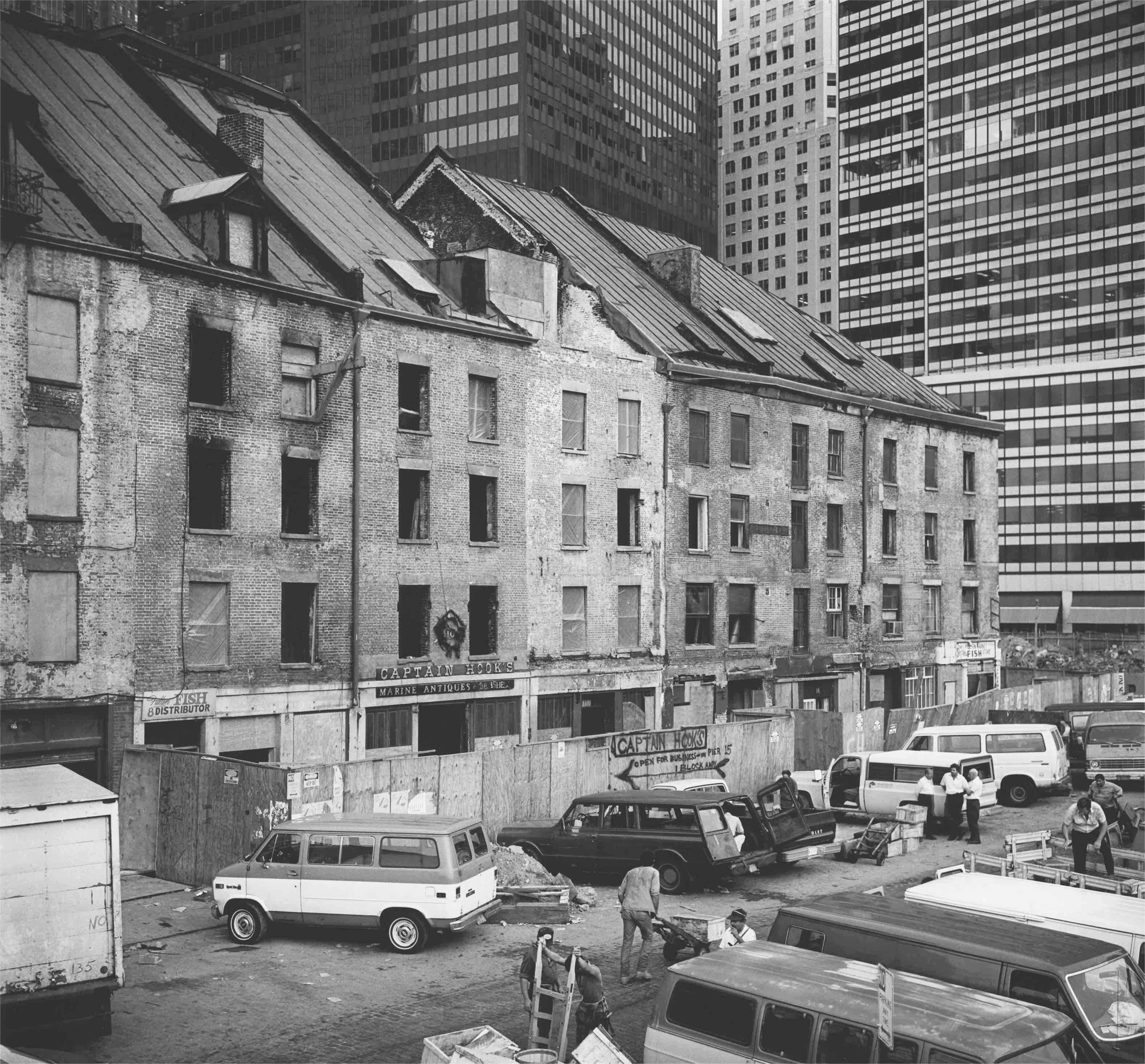 Doherty Loading Zone-Schermerhorn Row
Doherty Loading Zone-Schermerhorn Row
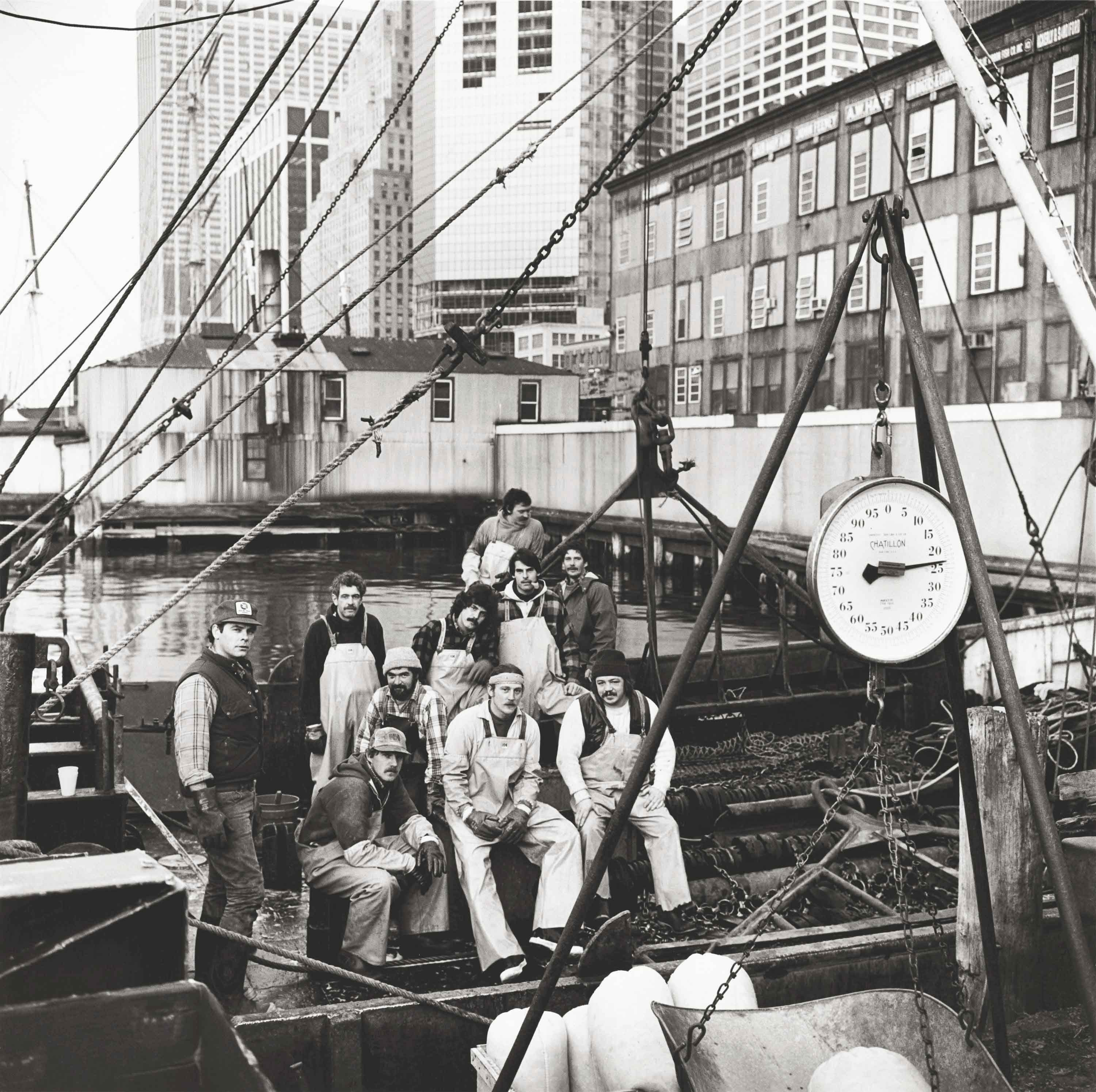 Last Fishing Boat to Beekman Dock
Last Fishing Boat to Beekman Dock
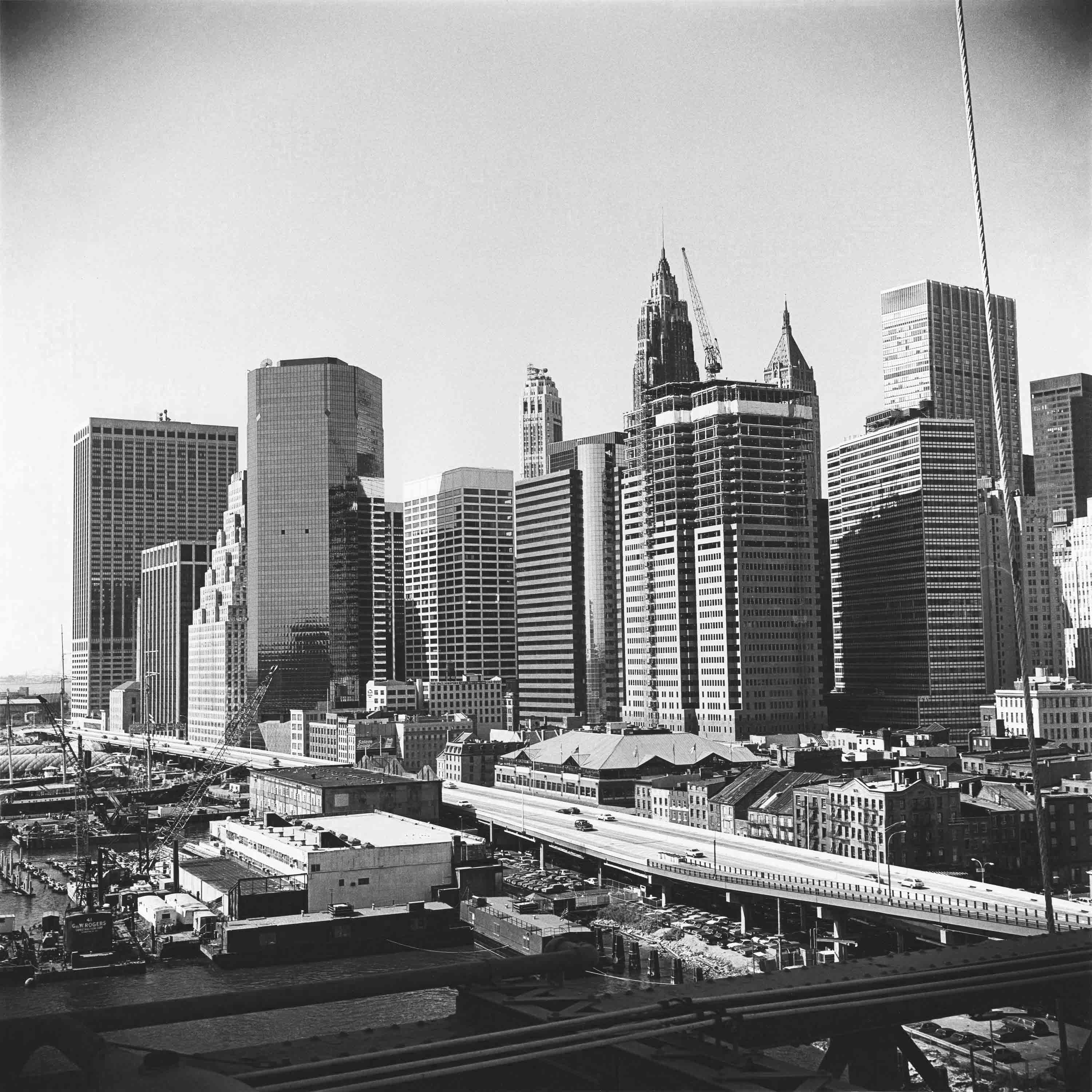
View from Brooklyn Bridge
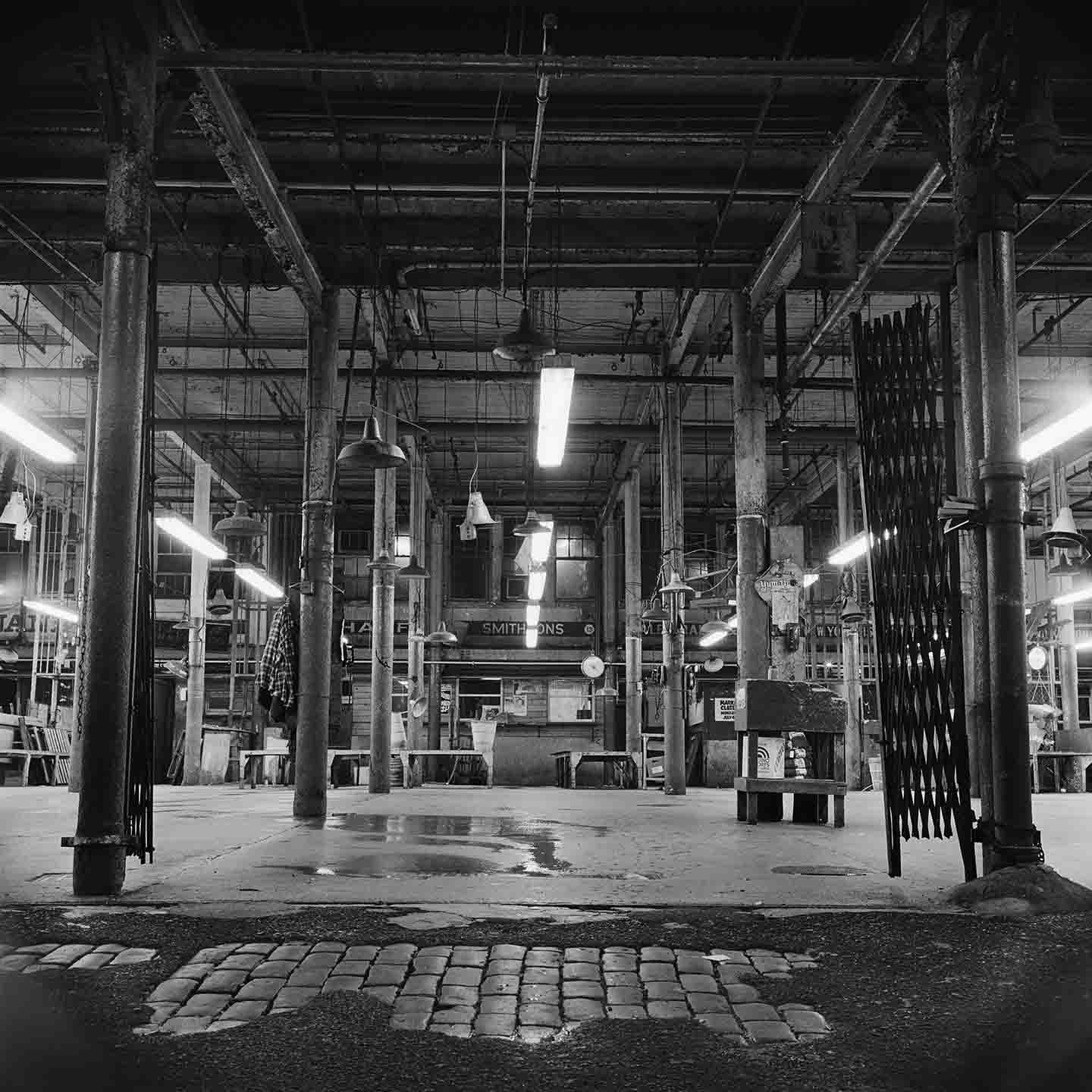
Tin Building, Interior
